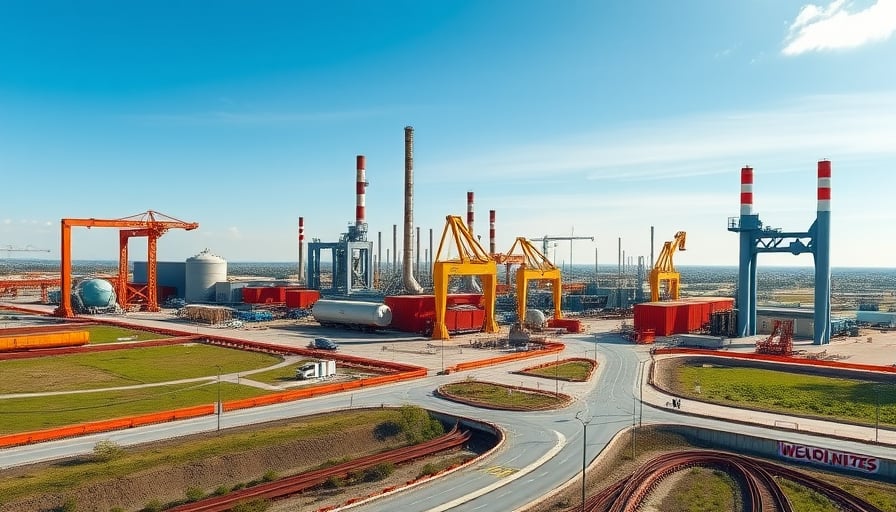Corporate Update: GE Vernova Inc Amidst Volatile Market Dynamics
GE Vernova Inc., a prominent entity within the electric power sector, has recently experienced pronounced volatility in its share price. The decline has been precipitated by an analyst downgrade to a “Sell” rating, accompanied by a revised price target that underscored heightened risk perceptions. In contrast, a countervailing “Buy” rating from another analyst, complete with an elevated price target, has injected a measure of optimism regarding GE Vernova’s future trajectory.
Market Capitalization and Investor Sentiment
With a market capitalization that positions GE Vernova among the larger firms in the industry, the firm’s financial metrics remain robust on paper. Nonetheless, the recent price fluctuation has eroded investor confidence, reflecting a broader unease about the company’s capacity to navigate a rapidly evolving competitive landscape. The duality of analyst perspectives underscores a broader industry ambiguity: while GE Vernova’s products and services are globally in demand, the firm’s ability to pivot in response to emerging market dynamics and regulatory shifts remains a decisive factor in sustaining long‑term value.
Capital Expenditure and Technological Innovation
GE Vernova’s capital investment decisions are guided by a strategic emphasis on productivity enhancements and technological innovation within heavy industry. The company’s production facilities incorporate state‑of‑the‑art manufacturing processes, including advanced automation platforms, real‑time condition‑monitoring systems, and digital twins that enable predictive maintenance and process optimization. These technologies collectively contribute to higher throughput, reduced cycle times, and lower operational costs—metrics that are central to justifying capital outlays.
From a capital expenditure perspective, the firm’s investment cycle is characterized by:
- High‑yield projects that deliver immediate operational efficiencies, such as the deployment of high‑pressure gas turbines with improved combustion efficiency.
- Long‑term R&D initiatives aimed at next‑generation nuclear technologies, where incremental gains in safety and performance translate into significant cost‑savings over the asset lifecycle.
- Infrastructure upgrades to support grid integration of intermittent renewable sources, ensuring reliability while maintaining zero‑emission mandates.
The ongoing shift toward nuclear energy within the United States—supported by bipartisan policy frameworks—creates a favorable environment for such investments. Nuclear facilities are increasingly being positioned as the backbone of a reliable, low‑carbon grid, thereby attracting both public and private capital.
Supply Chain Resilience and Regulatory Environment
Supply chain dynamics continue to influence GE Vernova’s operational planning. Fluctuations in the availability of critical components—such as high‑grade alloy steels for turbine blades and precision instrumentation—can impose significant cost pressures and delay production timelines. To mitigate these risks, the company has instituted strategic supplier diversification, just‑in‑case inventory buffers, and long‑term contracts with key vendors.
Regulatory developments in the power sector, particularly those targeting emissions and safety standards, further shape GE Vernova’s investment calculus. Compliance with Federal Energy Regulatory Commission (FERC) mandates, alongside evolving environmental regulations at the state level, necessitates continual upgrades to plant equipment and processes. The firm’s compliance roadmap includes:
- Carbon capture and storage (CCS) integration to meet emerging emission reduction targets.
- Advanced sensor networks for real‑time monitoring of hazardous parameters.
- Enhanced safety protocols aligned with the latest Occupational Safety and Health Administration (OSHA) guidelines.
Economic Drivers of Capital Expenditure
Macro‑economic variables—such as interest rates, inflation expectations, and commodity prices—directly influence GE Vernova’s cost of capital and return on investment thresholds. The current low‑interest-rate environment has made borrowing cheaper, thereby enabling the firm to finance large‑scale projects with lower debt servicing costs. Conversely, heightened inflationary pressures in raw material markets necessitate a more cautious approach to capital allocation, ensuring that cost‑to‑produce ratios remain within acceptable margins.
Additionally, infrastructure spending under federal and state initiatives, particularly those targeting grid modernization and clean energy deployment, provides a stimulatory backdrop for GE Vernova’s expansion plans. These funding streams can offset capital expenditures, improving project economics and accelerating deployment timelines.
Outlook
While analyst sentiment remains divided, the underlying fundamentals of GE Vernova’s business model—anchored in advanced manufacturing, technological innovation, and a strategic pivot toward nuclear energy—offer a resilient platform for future growth. The company’s capacity to adapt to supply chain volatilities, regulatory evolutions, and shifting economic conditions will be pivotal in sustaining market leadership and unlocking shareholder value in the coming years.
